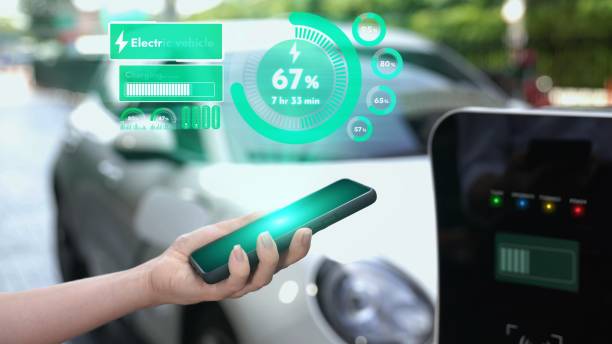
Eco Vehicle Integration in Public Transportation Systems: A Step Towards a Greener Future
Introduction
The integration of eco-friendly vehicles in public transportation systems has become an increasingly important topic in recent years. As concerns about climate change and environmental sustainability grow, finding ways to reduce carbon emissions and promote cleaner forms of transportation has become a priority. This article provides an overview of eco vehicle integration in public transportation systems, highlighting its relevance and importance in the current context.
Historical Background
Public transportation systems have evolved over centuries, from ancient organized transportation methods to modern buses, trains, and trams. However, it is only in recent decades that the concept of eco-friendly vehicles has gained traction in public transportation.
Key Concepts and Definitions
Eco Vehicle Integration refers to the incorporation of environmentally friendly vehicles, such as electric buses and trains, into existing public transportation systems. This concept encompasses not only the vehicles themselves but also the infrastructure and policies necessary to support their operation. By reducing carbon emissions, eco vehicle integration plays a crucial role in mitigating the negative impact of transportation on the environment.
Public Transportation Systems are organized networks of vehicles and infrastructure that provide transportation services to the public. These systems include buses, trains, trams, and other modes of public transportation. They play a vital role in urban mobility, reducing traffic congestion, and providing accessible transportation options for communities.
Main Discussion Points
Benefits of Eco Vehicle Integration in Public Transportation Systems
One of the primary benefits of eco vehicle integration is the significant reduction in carbon emissions and air pollution. Traditional public transportation vehicles, such as diesel buses, contribute to air pollution and greenhouse gas emissions. By replacing these vehicles with eco-friendly alternatives, cities can improve air quality and reduce their carbon footprint.
Additionally, eco vehicle integration leads to improved energy efficiency and fuel consumption. Electric buses and trains, for example, consume less energy compared to their fossil fuel counterparts, resulting in cost savings and reduced dependence on finite energy resources.
Furthermore, the integration of eco vehicles enhances the public perception and image of public transportation. By using environmentally friendly vehicles, public transportation systems can attract more riders and promote a greener lifestyle to the community.
Technological Advancements and Innovations
Technological advancements have played a significant role in the integration of eco vehicles into public transportation systems. The introduction of electric buses and trains has revolutionized the industry by providing clean and efficient transportation options. These vehicles are powered by electricity, reducing the reliance on fossil fuels and minimizing environmental impact.
In addition to electric vehicles, the integration of renewable energy sources is another key innovation. By harnessing solar or wind energy, public transportation systems can further reduce their carbon footprint and increase energy sustainability.
Moreover, smart transportation systems have been developed to optimize route planning and scheduling, ensuring efficient and streamlined operations. By leveraging data and advanced algorithms, these systems can minimize travel time, reduce congestion, and improve overall efficiency.
Policy and Government Initiatives
Government initiatives and policies play a crucial role in promoting eco vehicle integration in public transportation systems. Incentives, such as tax credits and subsidies, are often provided to encourage the adoption of eco-friendly vehicles. Regulations and standards are also implemented to ensure the integration of environmentally friendly technologies and practices.
Furthermore, funding mechanisms are in place to support the development and maintenance of public transportation systems. Government investment, public-private partnerships, and grants from various sources contribute to the sustainable growth of these systems.
Collaboration between government entities, public transit agencies, and vehicle manufacturers is vital in driving eco vehicle integration forward. By working together, these stakeholders can develop comprehensive strategies, share resources, and overcome challenges faced in adopting eco-friendly technologies.
Case Studies or Examples

Case Study 1: Implementation of electric buses in a major city
The implementation of electric buses in a major city has demonstrated the benefits and challenges associated with eco vehicle integration. The introduction of electric buses resulted in a significant reduction in carbon emissions and improved air quality. However, challenges such as high upfront costs, limited charging infrastructure, and range anxiety were faced during the implementation process.
Case Study 2: Integration of renewable energy sources in a tram system
The integration of renewable energy sources in a tram system showcased the energy savings and reduced dependence on fossil fuels. By harnessing solar energy, the tram system was able to operate more sustainably and achieve cost savings. Lessons learned from this case study can inform future projects and contribute to best practices in eco vehicle integration.
Current Trends or Developments
Current research findings highlight the effectiveness of eco vehicle integration in reducing carbon emissions and promoting sustainable transportation. Studies have shown that the adoption of eco-friendly vehicles in public transportation systems can lead to significant environmental benefits.
Innovative projects and pilot programs are being implemented in different regions to explore new technologies and practices. These initiatives aim to further enhance the efficiency and sustainability of public transportation systems.
Partnerships between public transportation agencies and technology companies are facilitating the development and implementation of innovative solutions. By working together, these partnerships can leverage expertise and resources to accelerate the adoption of eco-friendly vehicles.

Challenges or Controversies
Despite the numerous benefits, eco vehicle integration faces several challenges and controversies. The high initial costs of eco-friendly vehicles and infrastructure upgrades often deter the adoption of these technologies. The investment required for electric charging infrastructure and maintenance can be a significant barrier for many public transportation systems.
Limited range and charging infrastructure for electric vehicles remain a challenge. The need for a comprehensive charging network and extended range capabilities is vital for the widespread adoption of electric buses and trains.
Opposition from fossil fuel industries and traditional public transportation methods can also hinder the progress of eco vehicle integration. Resistance to change and the fear of job losses can create controversy and slow down the transition to more sustainable modes of transportation.
Future Outlook
The potential for increased adoption of eco vehicles in public transportation systems is promising. As technology advances and costs decrease, the feasibility of integrating eco-friendly vehicles becomes more attractive. Continued research and development efforts will further optimize these technologies and drive their adoption.
Technological advancements, such as improved battery technology and charging infrastructure, will contribute to the growth of eco vehicle integration. As these technologies become more efficient and cost-effective, barriers to adoption will diminish.
Furthermore, the integration of eco vehicles with emerging transportation trends, such as autonomous vehicles, holds great potential for the future. By combining these technologies, cities can create smarter and more sustainable transportation systems.
Conclusion
Eco vehicle integration in public transportation systems is a vital step towards a greener future. By replacing traditional vehicles with eco-friendly alternatives, public transportation systems can significantly reduce carbon emissions, improve energy efficiency, and enhance overall sustainability. Through technological advancements, government initiatives, and collaborative efforts, the adoption of eco vehicles in public transportation systems will continue to grow, contributing to a more sustainable and environmentally friendly world.




